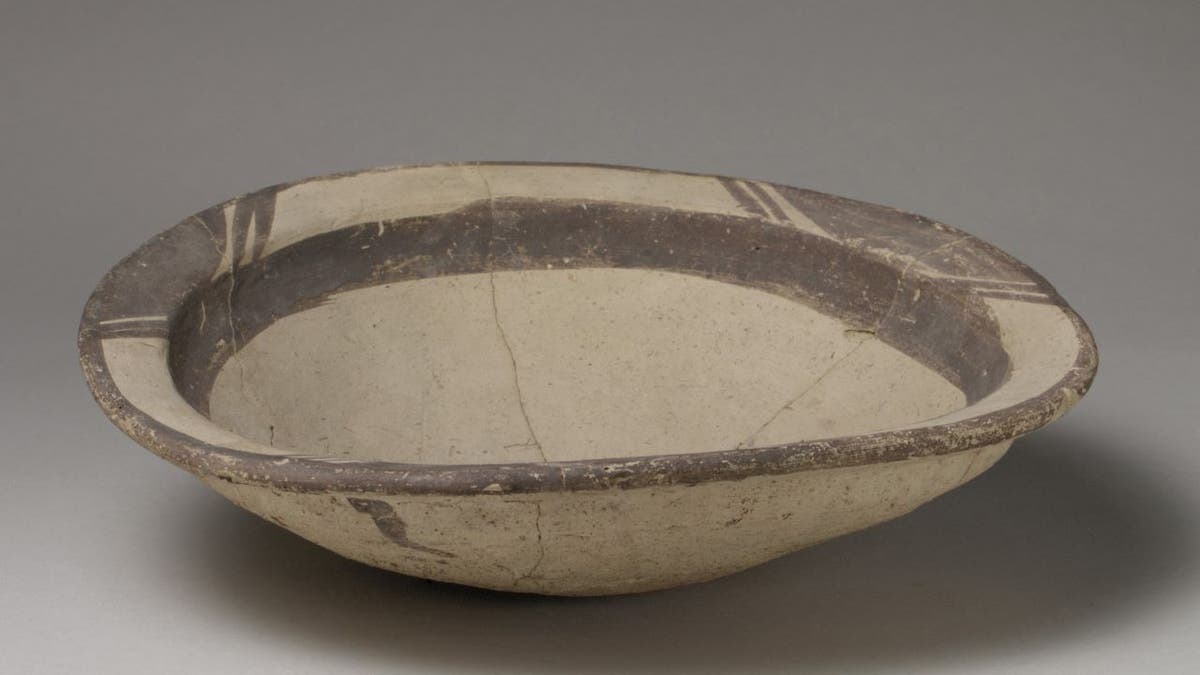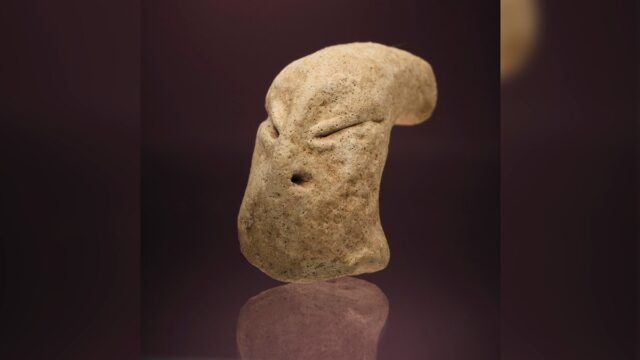A strange alien-looking clay head that is thousands of years old has been recovered from a dig in Kuwait, leaving archaeologists puzzled over how it came to exist.
In a Nov. 28 press release published by the University of Warsaw, the school explained that researchers from the Kuwaiti-Polish Archaeological Mission He found the artifact at Bahra 1, an archaeological site in the Subiya region of Kuwait.
The press release called the artifact “one of the most notable discoveries” of the excavation, describing it as a “small, finely crafted clay head with an elongated skull, slanted eyes and a snub nose.”
The figurine dates back to the Ubaid period of ancient Mesopotamia, before the Bronze Age. Archaeologists estimate that the artifact was made during the sixth millennium BC. C., so it is between 7,000 and 8,000 years old.
ARTIFACT WITH STRANGE EXTERIOR INSCRIPTION AT HOLY SITE IN JERUSALEM: ‘UNUSUAL LOCATION’
Archaeologists recently discovered a 7,000-year-old figure that looks like an alien. Researchers discovered the supernatural shape while excavating at a site in Kuwait called Bahra 1. (SWNS)
The Warsaw University statement noted that similar Ubaid figures had already been found, but this artifact was the first of its kind discovered in the Persian Gulf.
“Its presence raises intriguing questions about its purpose and the symbolic, or possibly ritual, value it had for the people of this ancient community,” Professor Piotr Bieliński said in the press release.
The archaeologists also noted that they discovered two different types of pottery at the site, calling the discovery “basic” for the study of the Ubaid period.
ARCHAEOLOGISTS DISCOVER ONE OF THE OLDEST CHRISTIAN CHURCHES IN THE WORLD
“Since its inception, excavations at the site have yielded two types of pottery: Ubaid, known to have been imported from Mesopotamia, and a completely different type known as Coarse Pink Ware (CRW) and known from sites in the Arabian Peninsula.” . the press release explained.
“It has long been said that this last type is produced locally, in the Gulf region, but until now the actual places of its production are unknown,” the statement added. “Conclusive evidence has finally arrived from the Bahra 1 site, including an unfired clay pot.”
CLICK HERE TO SUBSCRIBE TO OUR LIFESTYLE NEWSLETTER
The joint Kuwaiti-Polish archaeological team. (SWNS)
The finds confirm that Bahra 1, one of the largest and oldest known settlements in the Arabian Peninsula, is also the oldest known pottery production site in the Persian Gulf.
The excavators also found small fragments of plants that were added to the clay while the pottery was being made. Next, the researchers will carry out an archaeobotanical analysis of the plant matter to understand the native flora during the period.
For more lifestyle articles, visit foxnews.com/life-style.
“Early analyzes have revealed traces of wild plants, particularly reed, within locally produced pottery, while remains of cultivated plants, including cereals such as barley and wheat, have been found in pottery imported from Ubaid,” said Dr. Roman Hovsepyan.
The Kuwaiti-Polish Archaeological Mission plans to continue studying the site and hopes to find “more discoveries and knowledge about the intersection of the Ubaid cultures of the Arab Neolithic and Mesopotamia, as well as to develop greater cooperation between Polish and Kuwaiti heritage specialists,” reads the statement. noted.

An example of Ubaid pottery, found at the Eridu settlement. It dates back to the 6th or 5th millennium BC. (Getty Images)
CLICK HERE TO GET THE FOX NEWS APP
“Ongoing excavations reveal that Bahra 1 is a critical site for understanding cultural exchanges between Arab Neolithic societies and the Ubaid culture that spread from Mesopotamia to a vast territory, from Anatolia to the Arabian Peninsula,” says the press release. . “Recent research on Bahra 1 brought new information to the picture through several unique discoveries.”





